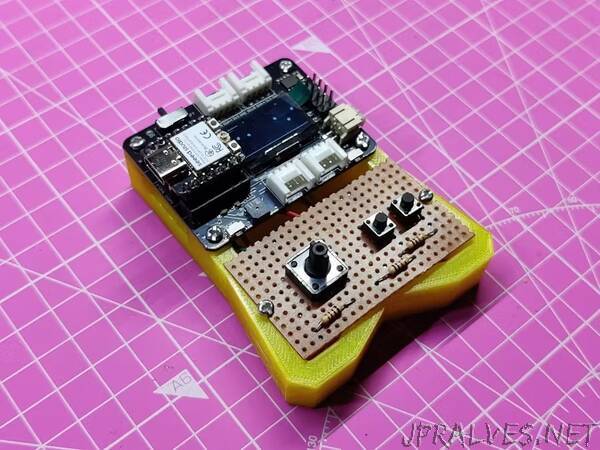
“I made a handheld game console that runs OG SPACE TRASH GAME using an XIAO expansion board.
Here’s something fun: a portable pocket game console that incorporates an XIAO ESP32C3, an XIAO Expansion board, and some custom 3D printed parts to run the beloved space trash game.
The XIAO ESP32C3 Microcontroller, which powers this project, pairs with an XIAO Expansion board. The XIAO ESP32C3 Board controls an OLED display placed on the XIAO Expansion board.
Three external buttons were added, one of which is for fire, and the other two for up and down control of the spacecraft.
The whole article is about the construction process of this build, so let’s get started.
Materials Required
These were the components used in this build:
- XIAO Expansion Board
- XIAO ESP32C3
- Breadboard
- Push Buttons
- 1K Resistors
- Prototype PCB
- 3D-printed body
An XIAO ESP32C3 microcontroller and an XIAO extension board manufactured by Seeed Studio comprised the heart of this project.
It comes with rich peripherals that include an OLED, RTC, SD Card Sot, passive buzzer, reset/user button, 5V servo connector, and Grove connector for pairing multiple Grove devices with XIAO.
We can power the entire setup using any Li-ion or LiPo cell thanks to its integrated Li-ion charging circuit.
If you would like to get one for yourself, here is the link to its page.
https://www.seeedstudio.com/Seeeduino-XIAO-Expansion-board-p-4746.html
The battery input section and the SSD1306 OLED were the two major elements we used in the expansion board.
The OLED screen is connected to the XIAO’s i2c pins, allowing us to control it directly without requiring additional connections.
the Adafruit’s SSD1306 library can be used with the OLED screen, but you can also use the u8g2library.
As for the microcontroller, we are using the XIAO ESP32C3, which is a IoT mini-development board based on the Espressif ESP32C3 WiFi/Bluetooth dual-mode chip. ESP32-C3 is a 32-bit RISC-V CPU, which includes an FPU (Floating Point Unit) for 32-bit single-precision arithmetic with powerful computing power.
This board comes with an external antenna to increase the signal strength for wireless applications. It also has a small and exquisite form-factor combined with a single-sided surface-mountable design.
It is equipped with rich interfaces and has 11 digital I/O that can be used as PWM pins and 4 analog I/O that can be used as ADC pins. It supports four serial interfaces, such as UART, I2C and SPI. There is also a small reset button and a bootloader mode button on the board.”
